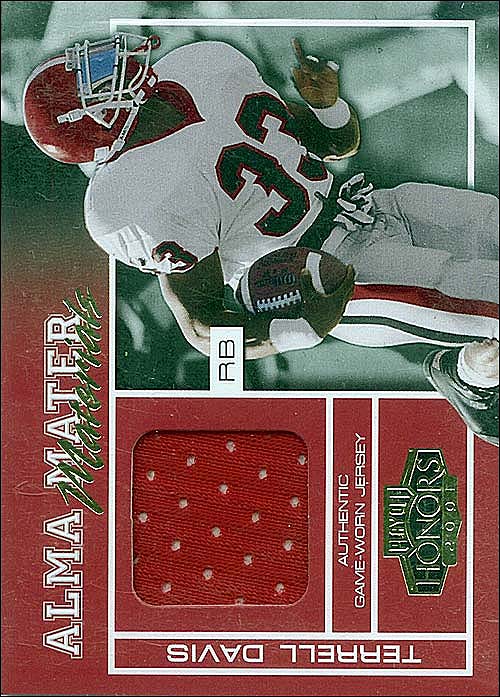

|
football cards home buy football cards browse cards why so cheap fantasy football help |


Football Card
Samples
Click on image to
see a larger version
|
|
||
|
|
 
|
|
|
|
||
|
|
||
|
|
 
|
|
|
|
||
|
|
||
|
|
 
|
|
|
|
||
|
|
||
|
|
 
|
|
|
|
||
|
|
||
|
|
 
|
|
|
|
||
|
|
||
|
|
 
|
|
|
|
||


links
|
Collecting Tip Surf the web for information and collecting tips - tip from www.cheapseatscards.com |
|
Frequently Asked Question What are redemption cards? Why are they used? Sometimes inside packs of trading cards, the manufacturer will place a redemption or trade card in the place of the intended item. This card can be mailed in to the company for the item printed on the card. Also called trade cards, they can be redeemed for items too big to fit into packs like autographed memorabilia (ever try to get an autographed basketball into a small pack of cards?), rookie player cards that are not yet drafted or determined at the time of production, or also in the unfortunate event that a player could not get their autographed back to the company in time for the product pack out. Another form of redemption card can also drive collectors to the company website to see what their card is good for and the item is automatically mailed to them. This is the wave of the future, as it saves collectors the trouble of having to physically mail their card in. Upper Deck was the first company to offer such an online redemption program. To check it out and learn more about the conveniences of this program visit the online redemption site . Since most companies cannot always keep stock of the item offered on the redemption card, there are printed expiration dates generally included in the copy on the card. If you find an expired redemption card in an old pack of cards, it is still worth calling the customer service department of company that produced the cards and asking them if the offer still stands or if a suitable replacement card can be offered. |
|
Customer Testimonial THANKS !!! A+++++++++++++ |
|
Glossary Term Crash numbering (also known as sequential numbering) - Adding numbering to a card front or back to make known the actual print run of a particular set. Cards are numbered in order up to a certain number either by foil stamp, ink jet printing, or by hand using a pen. For example the first card in the run could be "1/100," which would mean it is #1 of 100 total. The second card in the run would then be "2/100." The third card would be "3/100," and the numbering would continue up to "100/100." |